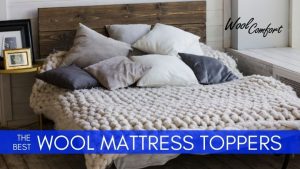What are Wool Socks?
A wool sock is a type of sock that is made of very fine, itch-free fibers of wool that allow it to perform extraordinarily among all other kinds of socks. Wool for socks is a natural wonder that guarantees extra comfort, softness and warmth. Their moisture wicking and antibacterial properties along with the breathability they provide help keep us warm and cozy all year long. If you haven’t switched to wool socks yet, you must not waste your time wearing cotton socks any longer. This winter is the best time to feel their magic on your toes!
Who Can Use Wool Socks?
Wool socks have been around for over a thousand years and they have never been age or gender specific. There’s a variety of wool socks available today with unique patterns and styles that are suitable for everyone: men, women and children. They can be worn with dresses, pants, sweaters and cardigans.
Wool Socks for Men: Athletic wool socks have now become more common, whether it’s a low-cut style or an ankle sock. Lightweight wool boot socks are an ideal buy for both, the winter and the summer because wool’s temperature regulation properties make it an appropriate wear throughout the year.
Wool Socks for Women: As the name implies, mid-calf wool socks, usually having cushioned foot beds, reach up to a person’s calf, while over the calf socks tend to cover the leg till the knees. Wool calf socks are seriously comfortable with their length and material that ensures proper insulation and luxury. Woolen stockings are becoming more and more common with the way they’re designed today. Tube and circle skirts are no longer a part of a summer outfit because the stockings cover the leg from the foot up to the knee, varying in colors and designs.
Wool Socks for Children: Just because they are designed to serve the purpose of keeping us warm, doesn’t mean your winter socks can’t be cute and unwearable during the summer and the spring. Bold colors, striking patterns and novelty socks are very common with children today. These silly, funky socks are a great way to spread happiness through feet fashion.
Types of Fabric Used for Wool Socks
When buying socks, it is important to look for the following four features: fabric, fit, cushioning, and sock height. Making sure the sock fits well should be a central part of sock shopping because good fitting tends to offer prevention from unnecessary foot infections and blisters. The amount of warmth is directly related to the fabric and cushioning while the sock height protects abrasion against your footwear.
Regular Wool: Standard wool is a widely used material in the production of wool socks. It usually provides little protection against skin-to-boot abrasion, so they should ideally be worn with low-cut footwear or light hiking shoes.
Synthetic Wool: Artificial wool is particularly good for mildly cool weathers where you don’t need the extra warmth but still want to feel at ease. It is typically cheaper than other kinds of wool and is more easily available in the market. However, it is not a good choice for the time when the temperatures drop and the nights get chilly.
Merino Wool: In the extremely cold months of the year, cotton and synthetic socks just won’t cut it. You would be forced to look for alternatives and the best option to consider in such a situation is, merino wool. Merino wool with its thermostatic properties and extra breathability is probably the best kind of wool out there. Heavyweight merino wool socks are an ideal buy for high warmth levels required when you’re trekking up a mountain in December.
Benefits of Wool Socks
Wicking: You cannot simply ignore the innumerable benefits there are, to wearing woolen socks. They are widely recognized for their insulating properties. The wool is able to regulate our body temperature by making use of their ‘air-pockets’. These air pockets simply trap the air inside them, allowing us to feel warm when it’s cold. On the other hand, wool socks, because of their hygroscopic nature, also make us feel cool when it’s hot. They wick the moisture away from our body as the water vapor passes through the tiny pores. There’s nothing more unfortunate than having to wear a pair of cotton socks in the winter because cotton is not only a very light fabric, it dries very slowly once it gets wet. Wool, in contrast, has the ability to get rid of the dampness a lot more quick. Woolen socks are naturally odor-resistant which clearly makes them an optimal choice for sweaty and smelly feet. This means that they don’t have to get washed every time you use them, therefore, keeping them away from the wear and tear due to over washing. Airing your wool socks for a few minutes will help you clean the fabric.
Antibacterial: More importantly, wool fibers have antibacterial and antimicrobial properties. Bacteriological tests have proved that microorganisms cannot be reproduced in the fur of a healthy animal. This is essentially due to a fatty substance present in the fibrils, known as lanolin. Lanolin is secreted by the sebaceous glands of the sheep which helps protect its skin over the course of its life. This fatty substance present in wool socks is an excellent feature because it interferes with the growth of microbes that can actually harm our feet nerves. It has been reported that doctors haven’t been able to find a way to completely reverse the nerve damage and so, it is necessary to take precautionary measures against it.
Breathability: If you’re not a fan of wool, you’d be relieved to know that merino wool is a type of wool that is much lighter than other wool. It feels smoother on your feet making it extra comfortable at the same time. Added to this, merino wool socks enable us to find the perfect fit for our feet due to their flexibility. Their fine fibers make the wool feel luxuriously soft and easy on the people who suffer from sensitive skin.
Health: From the ancient times of Europe, newborns were made to wear woolen socks because people generally believed that the healthiest garments were those that were made out of a rough goat or sheep wool. Today, multiple research studies have shown that wool tends to improve skin and nervous system along with blood circulation, especially for people with kidney diseases. One of the most sensory-rich parts of our body, are feet. They are sensitive to touch and are directly connected to our motor function. Natural wool socks have a stimulating influence on our nerve endings, similar to acupuncture. This is because they have pain constraining properties which allows a strong therapeutic effect on our feet.
What are wool socks good for?
It is a public misconception regarding wool socks that they are essentially made to be worn during the winter. However, given their temperature regulating properties, they can be worn throughout the various seasons of the year.
Outdoor: Because of the insulation they provide, wool socks are a must-have piece of clothing when you’re going for a week long hike because nothing can make you feel warmer than them. Wool socks that offer various cushioning options are ideal for a cycling or a running session. They are especially designed for the way you ride because the sock fit system helps keep the wool in place while enhancing breathability.
Winter: You could have the best kind of Christmas berets, the coziest waterproof jacket, and leather boots but if you don’t invest in warm socks, you are going to have the most uncomfortable winter of your life. It is important to invest in the right kind of socks for the season to keep your toes from freezing. With a great pair of boots, there should be an even greater pair of socks. High-rise wool socks allow additional heat to be trapped around our calves, making our entire leg feel warm.
Wet Weather Conditions: You don’t want to wear something other than woolen socks when it’s raining. Once your synthetic or cotton socks get soaked, you could get into some serious trouble with the cold feeling moisture spreading around your feet. In such a situation, make sure you look for thicker wool socks such as merino wool that can simply dry your feet even if your shoes get socked through the rain or the snow.

